Plan Ahead With Innovative Relief Conex Housing
 Marissa Morin | Aug 25, 2020
Marissa Morin | Aug 25, 2020
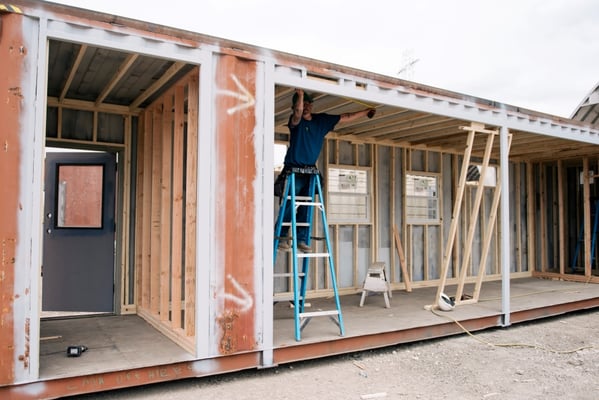
The year 2020 has had its share of upheaval, including tropical storms and hurricanes in the South, tornadoes and wind storms in the Midwest, forest fires in the West, and power outages in the Mid-Atlantic and Northeast regions that left millions in the dark. And that’s not counting the COVID-19 pandemic!
Finding temporary housing solutions for those displaced by natural disasters and other major events is one of the biggest challenges in disaster management. An ideal solution should be prepared well in advance. Additionally, relief housing should feature homes that are durable, weather-resistant, secure, easy to set up, and easy to transport. To serve the needs of those who reside there, temporary housing also needs to have basic amenities such as electricity, insulation, and HVAC systems.
Conex shipping container housing meets and exceeds all these requirements, making them the top choice for temporary disaster housing.
Conex Housing for Displaced Families
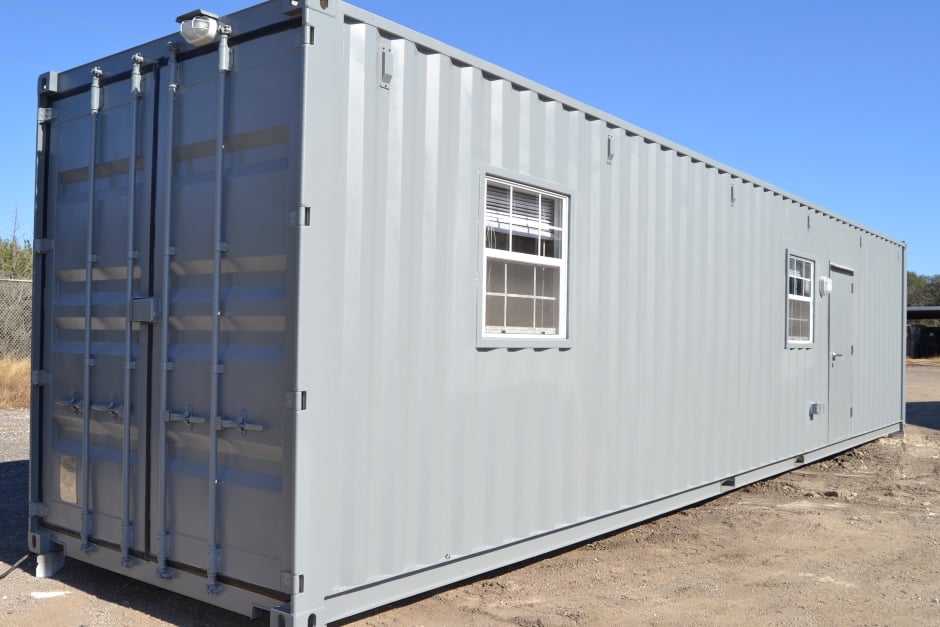
After a natural disaster, it’s important to provide for people who are displaced and need temporary housing. Depending on the scale of the disaster, some communities set up large community shelters that can house multiple people in one location while recovery efforts take place. These conditions aren’t always conducive for sustained periods of time, especially for families who may have lost their homes.
Large-scale shelters may not feel safe for some and often don’t have adequate resources for large numbers of people. To avoid difficulty and delays in providing relief, it’s essential to monitor trends and understand the likelihood of natural disasters. One way to provide the best relief housing when the times comes, is to order modified containers in advance so they are already on hand.
Eco-friendly conex boxes can be used for short-term or long-term housing solutions, allowing officials to quickly establish mobile relief centers where families can escape the elements, rest, and feel safe. This housing solution comes in various square footages, equipped with:
- Plumbing, fixtures and water heaters
- Climate control for heating and cooling
- Lighting and power outlets
- Wiring for internet
- Insulated walls and ceilings
Conex Temporary Housing for Relief Workers
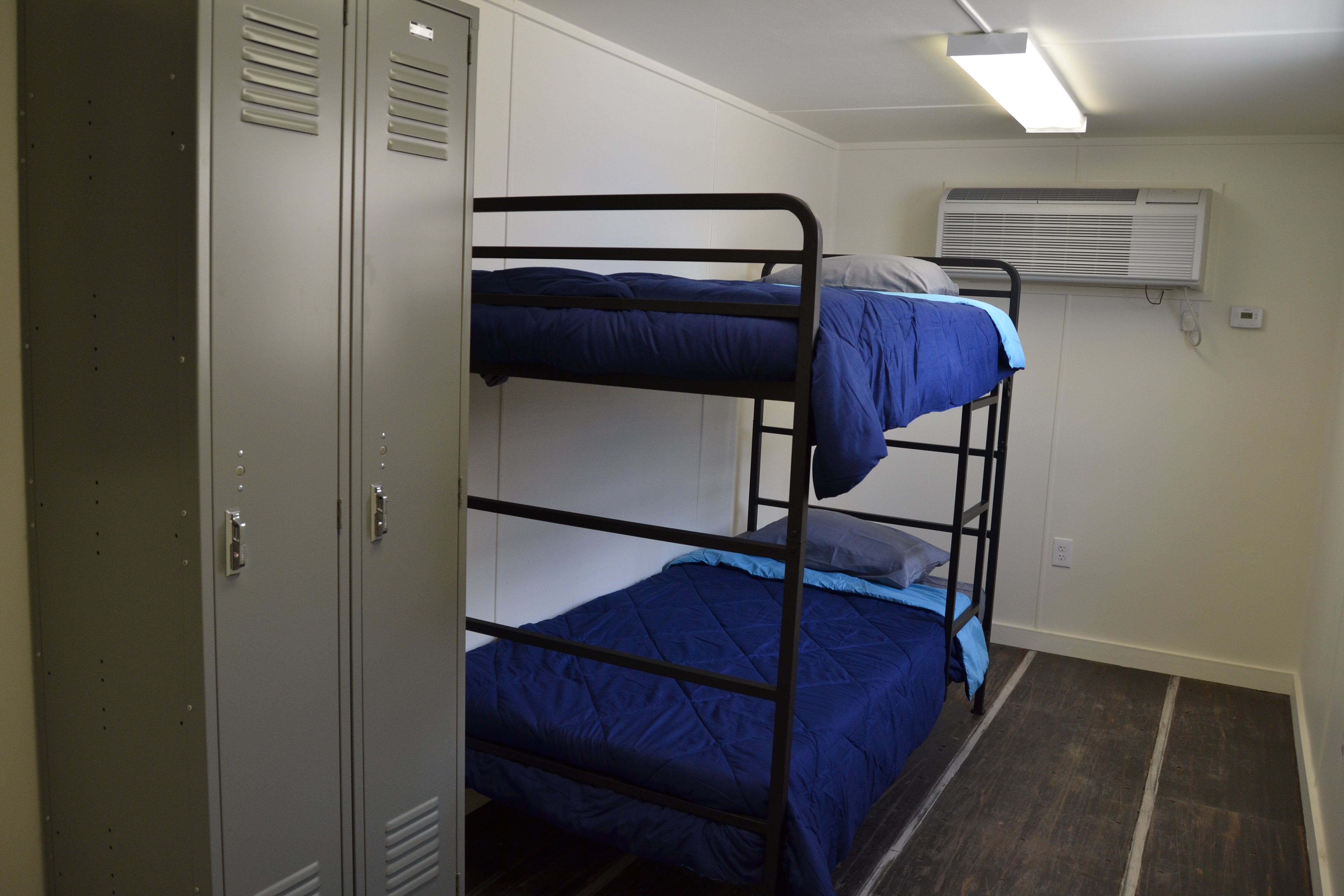
Building a container relief center isn’t just for those displaced by disaster – containers can also house and protect those sent to serve. When the Red Cross or other disaster response teams show up, disaster relief workers need somewhere to stay. With hotel rooms at a premium due to the number of displaced families seeking a place to stay, relief teams can set up onsite using previously prepared structures.
Conex housing is available with various floor plans to accommodate sleeping quarters, showers, office space, site storage, or other needs. Multiple conex boxes can serve as a disaster recovery command center where teams can easily deploy knowing they’ll have comfortable and secure living quarters to return to each night.
In the case of the global pandemic, some hot spots like New York City had more patients than they could handle and needed to house frontline workers from around the country to temporarily serve as healthcare professionals. Conex housing could help provide relief in this scenario in similar ways conex boxes provided relief as temporary COVID-19 testing facilities and mobile treatment centers. The United States Air Force even transported COVID-19 patients in modified shipping containers.
How Conex Mobile Units Help Pandemic Response
Benefits of Using Conex Temporary Housing
Transporting Conex Box Houses
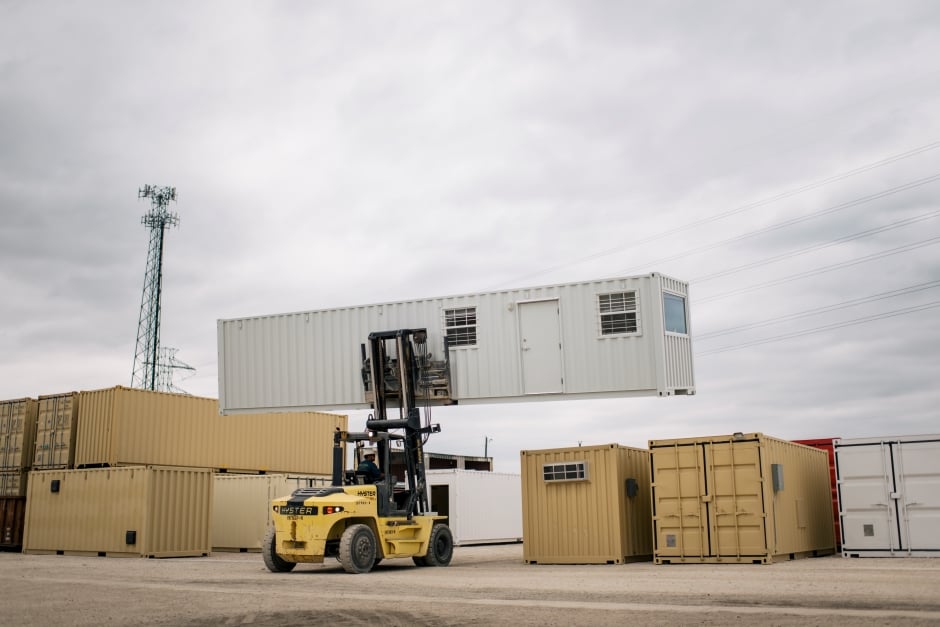
Since shipping containers come in standard sizes, they are compatible with pre-existing channels of transportation, making transportation simple. Conex container housing can be quickly and efficiently shipped to wherever they are needed most.
Easy Set-Up of Container Housing
Once the boxes are delivered, a site set up crew can place the boxes directly on level ground. This means that relief workers and displaced persons can receive housing as soon as possible, with improved efficiency in transportation or construction when compared to traditional construction.
Safety with Conex Housing
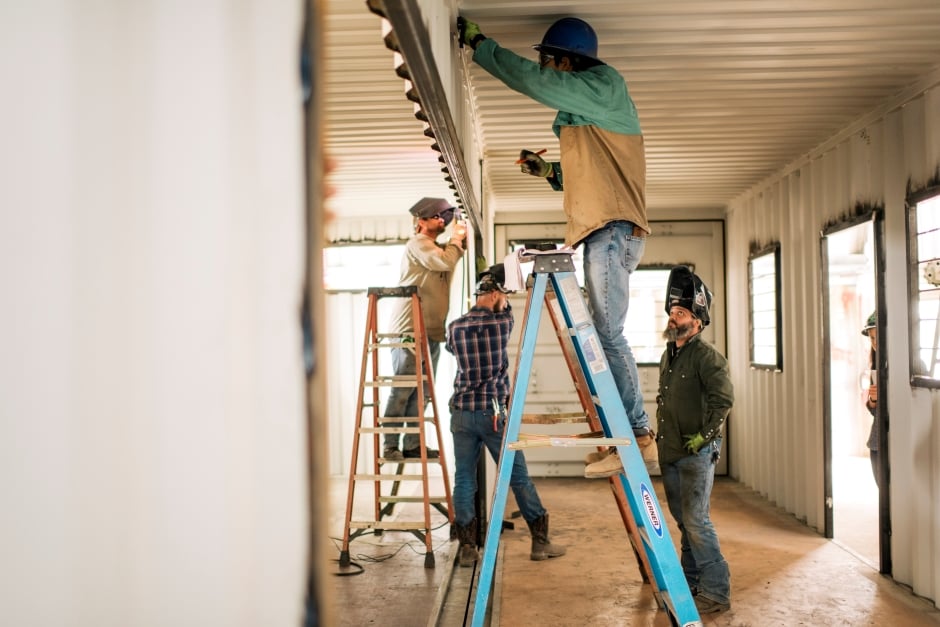
Temporary housing should protect from the elements and keep its residents secure. This is especially true in cases where displacement has already occurred. Conex boxes are certified wind and water-resistant and can be set up with HVAC systems in areas with extreme heat or cold.
While physical recovery is important, after a traumatic experience, feeling a sense of safety and security is a critical aspect of emotional recovery. Conex container housing is very secure, meaning that the inhabitants and their possessions will be protected from potential security breaches. Likewise, workers need to know their belongings are safe while away at a worksite. A shipping container home is constructed of 16-gauge, corten steel, steel doors, deadbolt locks, and optional bars to keep intruders out.
Durability in Container Housing
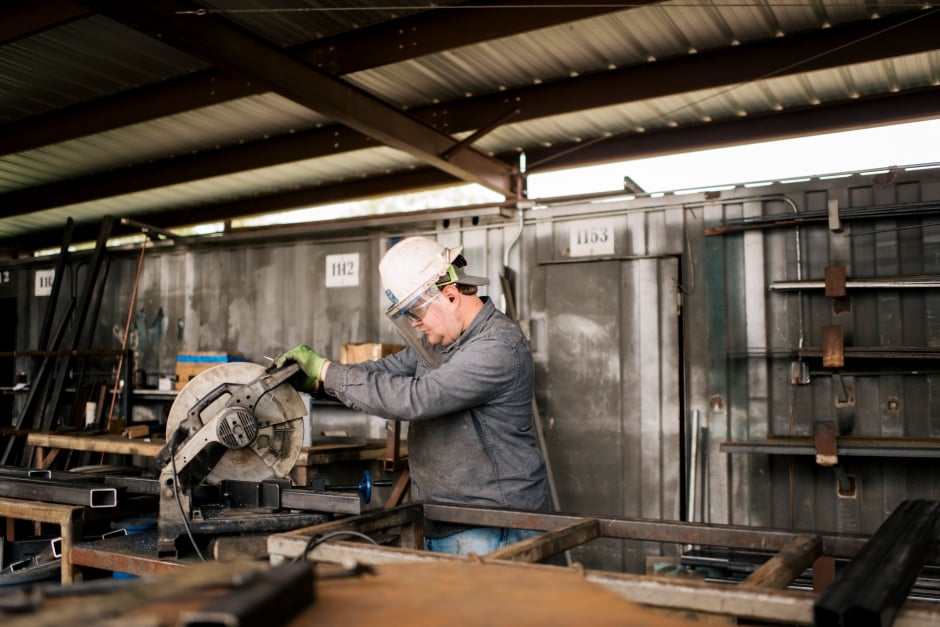
Relief housing is, by definition, temporary, meaning that it must either be torn down or stored when the need is gone. With a typical service life of about 10–12 years or more, mobile Conex container housing is designed to be moved and stored easily and efficiently, so they can be used for future disasters.
Container housing is also economical; once the box is purchased, any remaining expenses are due to utilities that provide running water and climate control. Containers also maintain half of their original buying value for up to 25 years, making it a wise investment that can lead to savings down the road.
Space-Saving Solutions
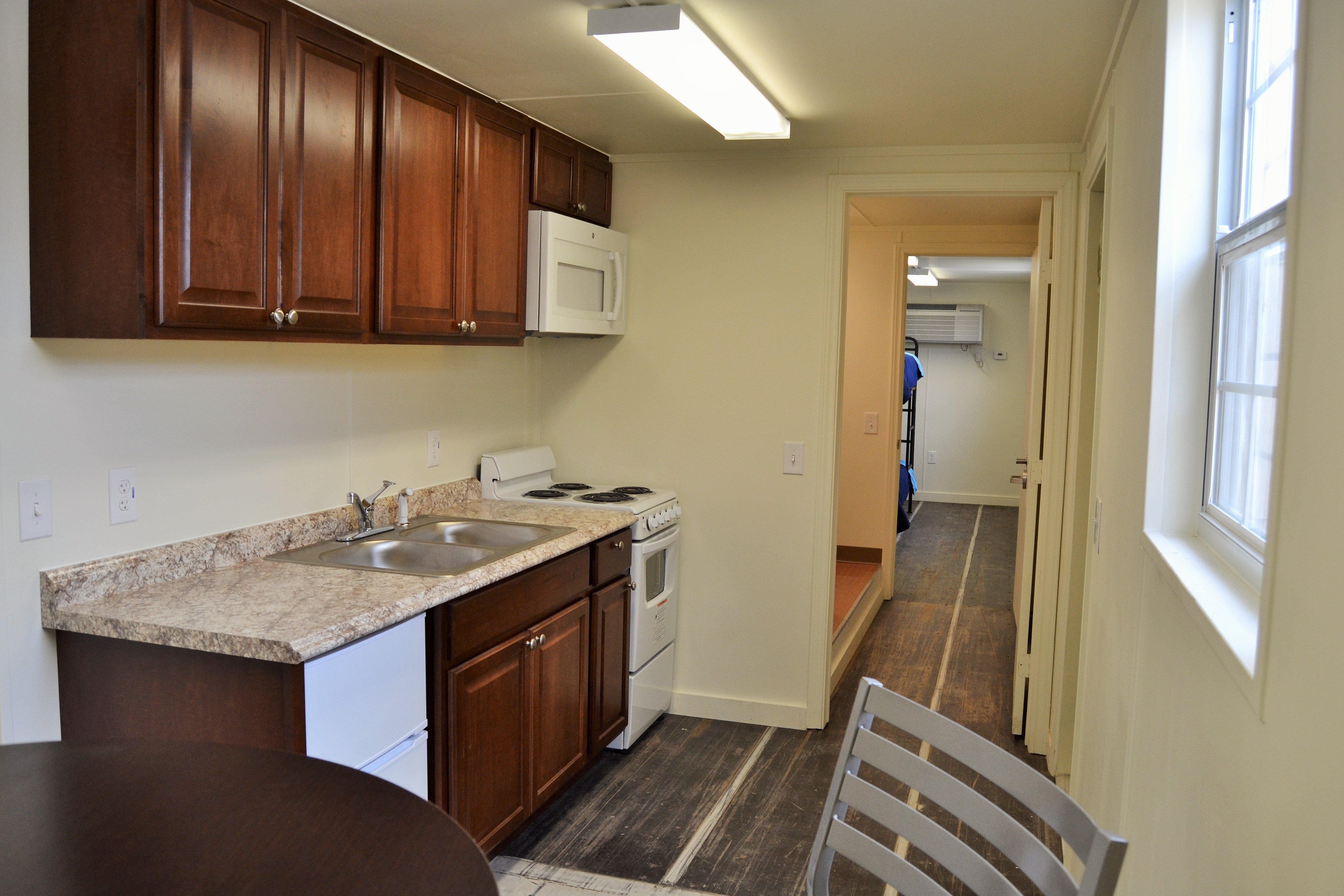
Conex housing can be modified for the needs of families and different climates. For example, they come in standard sizes ranging from 20-feet to 40-feet, allowing the boxes to help accommodate both large and small families. In addition, boxes can be stacked or joined when necessary to add even more space.
The most successful disaster response efforts begin with proper disaster preparedness. View additional considerations for temporary housing in our guide below and start exploring your conex home options today by connecting with one of our experts.
SUBSCRIBE
- Shipping Container Modifications
- How-Tos
- Workspace
- Commercial Construction
- Multi-Container Buildings
- Storage Solutions
- Industrial Enclosures
- Bathrooms & Locker Rooms
- Oil & Gas
- Climate Control
- Green Building
- Living Space
- Industry Insight
- Military & Training Facilities
- Water Treatment Solutions
- Energy
THINK INSIDE THE BOX®
WITH OUR BLOG
Get everything from shipping container basics, to detailed how-tos and industry news in our weekly blog. Stay inspired and subscribe!
RELATED BLOGS
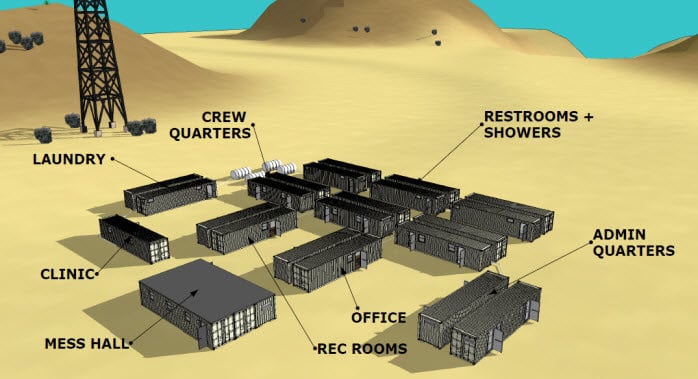
Accommodate Any Size Work Force with Man Camp Housing
Marissa Morin | Sep 16, 2020 | 2 min read
READ MORE
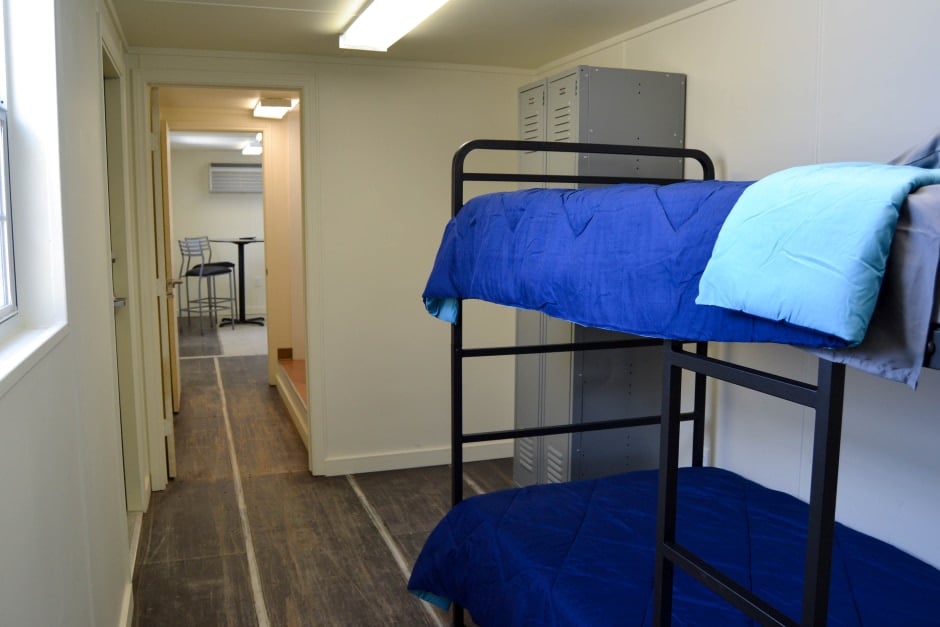
How to Create Portable Temporary Housing with Shipping Containers
Marissa Morin | Jan 2, 2020 | 3 min read
READ MORE
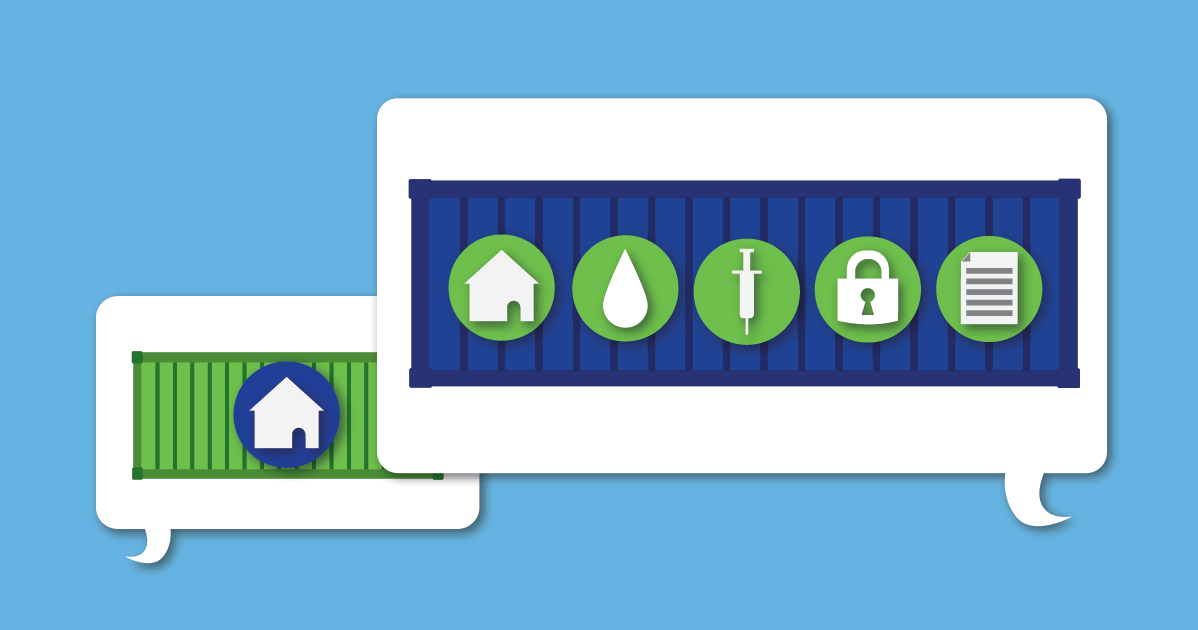
The Surprising Best Use for Shipping Containers in Disaster Recovery
Paige Welsh | May 9, 2018 | 3 min read
READ MORE
